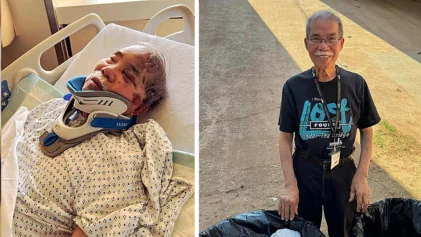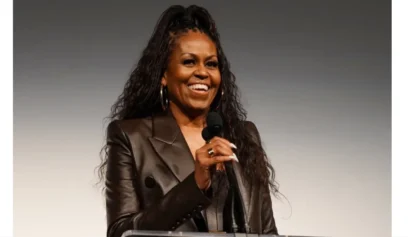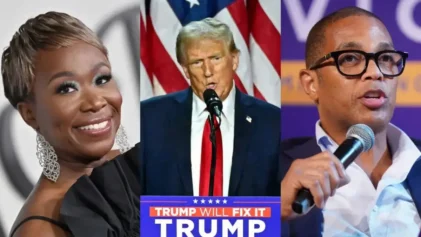A Nebraska police chief on Monday, Nov. 23, said his officers were justified in using deadly force in the Nov. 19 killing of a Black man armed with a gun.
Kenneth Jones, 35, was shot three times by an Omaha patrolman during a traffic stop that, within 67 seconds, turned tragic. The fatal police shooting triggered a tumultuous weekend of protests throughout Omaha, with angered residents accusing police officers of murder and demanding answers.
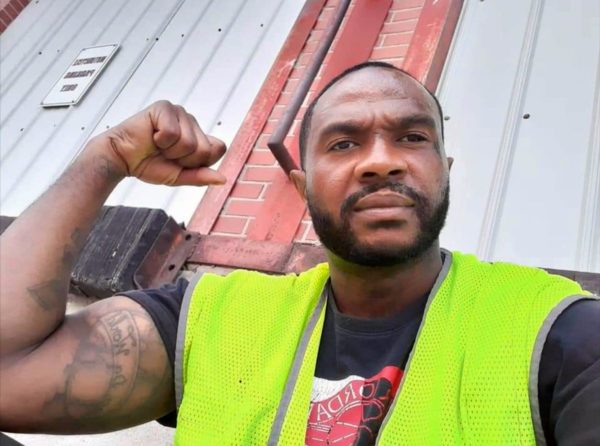
Protesters took to the streets outside police headquarters Friday and Saturday calling for the bodycam footage to be released. ProBLAC, an Omaha coalition aimed at police reform coalition, organized the rallies and said police had no probable cause for the traffic stop that led to Jones’ death.
“This is another black Man’s blood on the hands of those ‘protecting and serving,’ ” the group tweeted in a Nov. 20 statement.
Others tweeted video of skirmishes between protestors and armed Omaha officers.
Omaha police chief Todd Schmaderer did not release the footage during a press briefing Monday. But he made several revelations about the incident, telling reporters that Jones had a loaded .45-caliber handgun concealed in his waistband and seemed on the verge of drawing it on officers when officer Dan Faulkner opened fire.
Afterward, investigators recovered a vial of liquid PCP from Jones’ clothing.
“In this incident, the officers faced a very difficult situation with a person with a gun who would not comply with their commands,”Schmaderer said. “My senior command staff and I are in agreement in this matter. The officer used deadly force in accordance with our policy.”
The shooting involved Faulkner and officer Richard Martier, both four-year veterans of the Omaha Police Department. The two officers have been placed on paid administrative leave pending investigation of the shooting.
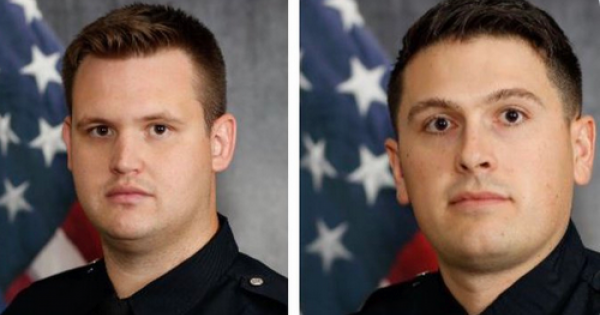
Schmaderer did not release dashcam video or footage from either officers’ body cameras Monday, despite a clamoring for video evidence from community leaders. The chief cited a Nebraska state law that requires a grand jury to be convened to review evidence in all fatal police shootings. Schmaderer said the video footage will be released after a grand jury has been called. He could not offer an estimate of how soon that may be.
“The video is the most inflammatory piece,” Schmaderer said. “You would witness a man’s death. Arguably, if you’re going to taint a jury pool, it would be with that piece of evidence. And we feel as law enforcement, because of that state law, that the release of that video should not come from us.”
The videos could become trial evidence if any charges result from the shooting, but state law mandates disclosure of all evidence if the grand jury returns no charges, the Omaha World-Herald reported. Schmaderer reviewed the footage and provided seven still images from the dashcam and bodycam videos while describing the incident in detail.
“The public needs to see the evidence,” he said. “So that video will be released after the grand jury and the public will get to see it.”
Police narrative of events
The fateful incident began about 7:30 the night of Nov. 19 when Faulkner and Martier spotted a Dodge Charger stopping and going in the middle of the road for half a block, Schmaderer said. The officers suspected the driver of being impaired and initiated a traffic stop at the intersection of 27th and Harrison streets. Jones, one of four occupants in the car, was sitting in the back seat behind the drive, who later proved not to be impaired.
The officers ordered the occupants to show their hands as they exited their patrol cruiser and immediately noticed Jones reaching toward the floorboards. Faulkner yelled, “He’s reaching,” and both officers drew their weapons as they approached the Charger giving loud commands for the occupants to show hands.
The three women in the car put their hands outside the car’s windows, images showed. But Jones did not follow officers’ orders, according to the police chief. Schmaderer said Jones continued to make what he described as “furtive movements” in the back seat, heightening officers’ alarm.
KETV interviewed the woman driving the car, who said officers never told her why she was being stopped. The woman also told the Omaha TV station that Jones raised his hands in the air.
But according to Schmaderer, Martier noticed Jones’ right hand tucked in his waist band and tried to open the back door but it was locked. After yelling for Jones to open the door six times, Martier used his flashlight to break the window and opened it himself. He then pulled Jones out of the vehicle as Faulkner rushed in and both officers wrestled to place him in handcuffs.
During the struggle, Faulkner reached into Jones’ pants, tracing the path of his right hand, which was still in his waistband. That’s when the officer felt the gun metal and realized Jones was armed.
“At one point, both he and Jones had had their finger in the trigger guard of the gun inside of Jones’ baggy pants,” Schmaderer said.
Worried that Jones would shoot from between his legs, Faulkner pushed Jones away to disengage and draw his gun. He yelled, “He’s got a gun, he’s got a gun. Gun! Gun! Gun,” prompting Martier to also pull out his weapon again as Jones was stumbling backward. Faulkner said Jones raised his right elbow as he looked over his left shoulder and started turning toward Martier, according to Schmaderer.
That’s when Faulkner fired four times, shooting Jones twice in the back and once in the shoulder, the chief said.
The officers remained leery after Jones fell to the ground and momentarily continued to yell for him to show his hands. But when he didn’t respond they rolled him over onto his back to begin CPR. That’s when the weapon fell from his right hand.
Jones was taken to University of Nebraska Medical Center, where he died.
Schmaderer said police believe Jones was pulling the gun from his waistband when he was shot, based on a witness who reported seeing a black object in his hand. Authorities are now working to trace the gun’s history. Schmaderer said it was not registered to Jones, who had a felony conviction that prohibited him from owning or possession a firearm.
Toxicology results from Jones’ autopsy likely won’t be available for a few weeks. The department has launched an internal investigation to see if Martier and Faulkner violated any secondary department policies. Neither had any prior disciplinary history or use-of-force complaints, Schmaderer told reporters. The chief said he evaluated the officers’ use of force and found their lethal response was justified.
“I’ve watched a lot of videos over the years, and this is one of the most non-compliant situations that I have seen as chief,” Schmaderer said Monday.
“I don’t know why Mr. Jones did not comply with any commands,” he later added. “I wish I did. That’s something we wish we could know, and unfortunately we’re not going to be able to totally find that out.”
Aftermath
The shooting sparked two nights of protests with demonstrators staging outside the Omaha Police station and marching through the city’s Old Market area. Department officials said protesters tried to agitate officers with profane language, and later called both assemblies unlawful. Two pro-police demonstrators showed up to the rallies Saturday night and held signs supporting law enforcement. Department officials arrested two women accused of assaulting the counter protestors.
When asked if he felt his department was adequately controlling the gatherings, Schmaderer said he felt they were. The chief indicated “officers have faced a lot of agitation” and taunting from the crowds, but encouraged their right to organize while cautioning counter protesters against mixing into the fray.
“I appreciate the pro-police position, but it’s not helpful to us when you come down and display that during a protest in the same environment that’s against the police,” Schmaderer said.
Roberto Silva Jr., a 23-year-old Omaha man, was arrested without incident shortly after authorities allege he shot four employees Saturday night at a Sonic drive-through in Bellevue, a suburb of Omaha. The shooting left two of the fast food workers dead.
Silva was unarmed and didn’t resist when Bellevue police arrested him near the scene early Sunday, according to the Associated Press. But police did seize four firearms from him after the shooting.
ProBLAC pointed to Silva’s arrest as “hypocrisy in action,” noting it was just three miles away and days after Jones was shot dead.
“Kenny Jones was murdered for non-compliance,” the organization tweeted. “This man was gracefully arrested for premeditated murder.”
Jones was an acquaintance of the driver’s daughter, and authorities said they were giving him a ride when the police encounter happened. The woman driving the Charger started recording the incident on her cell phone when Martier bashed the windows out. Schmaderer said police seized the woman’s phone as evidence but had yet to review the video because they couldn’t unlock the phone.
The chief also explained why it took so long to release detailed information about the shooting amid growing calls from the community. Schmaderer said investigators didn’t start interviewing the officers involved until Saturday, Nov. 21. They then had to review all the video footage.
“It’s unrealistic to think that the night of a major incident that the police department will have a complete accounting of what took place,” he said. “It was imperative to me that we have a thorough and complete investigation before I come out and talk about what occurred. It was of such importance to the community, and I wish it was viewed this way, that we do take our time and make sure that this is done appropriately.”
